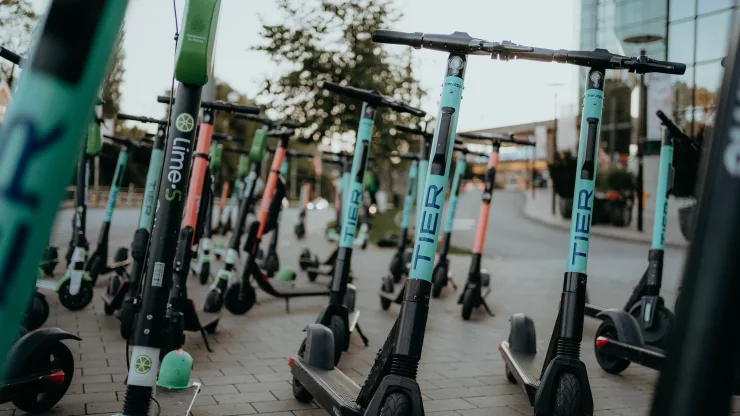As cities continue to grow, the interaction between urban wildlife and transportation becomes increasingly important.
Green transportation and sustainable mobility can promote coexistence between humans and animals, while also benefiting the environment and public health.
In this article, we will explore the challenges and opportunities of urban wildlife, the benefits and challenges of green transportation, and best practices and case studies for promoting sustainable mobility.
Jump to Section
Urban Wildlife: Challenges and Opportunities
Challenges
Urbanization poses several challenges for wildlife, including:
- Habitat Loss: As cities expand, natural habitats are destroyed, leaving animals with fewer places to live and breed.
- Climate Change: Temperature increases, extreme weather events, and changes in seasonal patterns can impact wildlife populations and migration patterns.
- Pollution: Air, water, and soil pollution can harm wildlife and their habitats, leading to population declines and health issues.
- Human-Wildlife Conflict: Urban wildlife can cause property damage, spread disease, and pose safety risks to humans.
Opportunities
Despite these challenges, urban areas can also provide opportunities for wildlife conservation and management.
Some examples include:
- The Role of Urban Green Spaces: Parks, gardens, and other green spaces can provide critical habitat for wildlife in urban areas.
- Wildlife Corridors and Connectivity: Connecting green spaces and wildlife habitats through corridors can help animals move safely through urban areas.
- Citizen Science and Community Engagement: Engaging the public in wildlife monitoring and conservation efforts can lead to greater awareness and support for urban wildlife.
Green Transportation: Benefits and Challenges
Benefits
Green transportation, such as walking, cycling, and public transit, provides several benefits for both humans and the environment, including:
- Reduced Air Pollution and Greenhouse Gas Emissions: By reducing the number of cars on the road, green transportation can improve air quality and reduce greenhouse gas emissions.
- Improved Public Health: Active transportation can lead to improved physical health, reduced stress, and better mental health.
- Cost Savings: Green transportation can save individuals and communities money on fuel and transportation costs.
- Enhanced Livability: By promoting walkability, bikeability, and public transit, green transportation can create more vibrant and connected communities.
Challenges
However, there are also challenges to implementing green transportation, including:
- Limited Infrastructure and Investment: Many cities lack the necessary infrastructure, such as bike lanes and sidewalks, to support active transportation.
- Behavioral Barriers: Some people may be resistant to using green transportation due to safety concerns, inconvenience, or cultural norms.
- Equity Concerns: Low-income and marginalized communities may face greater barriers to accessing green transportation options.
Promoting Sustainable Mobility: Best Practices and Case Studies
Best Practices
Several best practices can help promote sustainable mobility in urban areas, including:
- Complete Streets: Designing streets to accommodate all modes of transportation, including walking, cycling, and public transit.
- Transit-Oriented Development: Building dense, mixed-use development around public transit stations to encourage transit use.
- Active Transportation: Encouraging walking, cycling, and other forms of active transportation through infrastructure improvements and education campaigns.
- Shared Mobility: Providing shared transportation options, such as car-sharing and bike-sharing, to reduce the need for car ownership.
Case Studies
Several cities have successfully implemented sustainable mobility initiatives, including:
- Portland, OR: Known for its extensive bike infrastructure and public transit system, Portland has made sustainable mobility a priority for decades.
- Boulder, CO: With a strong focus on pedestrian and cyclist safety, Boulder has implemented a variety of green transportation initiatives, including bike-sharing and electric vehicle charging stations.
- Freiburg, Germany: A leader in sustainable urban planning, Freiburg has implemented a range of green transportation initiatives, including car-free zones and extensive bike infrastructure.
- Bogota, Colombia: With its TransMilenio bus rapid transit system and Ciclovia open streets program, Bogota has made sustainable mobility accessible and affordable for its residents.
The Future of Sustainable Mobility and Urban Wildlife
As cities continue to grow, it is crucial to promote sustainable mobility and coexistence with urban wildlife.
By implementing best practices and learning from successful case studies, we can create more livable, connected, and sustainable communities for both humans and animals.
FAQ
What is the role of citizen science in promoting urban wildlife conservation?
Engaging the public in monitoring and conservation efforts can lead to greater awareness and support for urban wildlife.
Citizen science projects, such as bird counts and wildlife surveys, can provide valuable data on urban wildlife populations and help identify areas for conservation and management.
How can cities promote equity in sustainable mobility initiatives?
Cities can promote equity by ensuring that sustainable transportation options are accessible and affordable for all residents, regardless of income or location.
This can include providing safe walking and cycling infrastructure in low-income neighborhoods, offering discounted or free public transit passes, and implementing bike-share programs in underserved areas.
I’m a nature enthusiast and creator of Metro Wilds and have spent years exploring the great outdoors.
With a passion for environmental conservation and sustainability, I have dedicated my career to writing about the beauty and wonders of nature, as well as the threats facing our planet.
Contact me at [email protected] for assistance.





